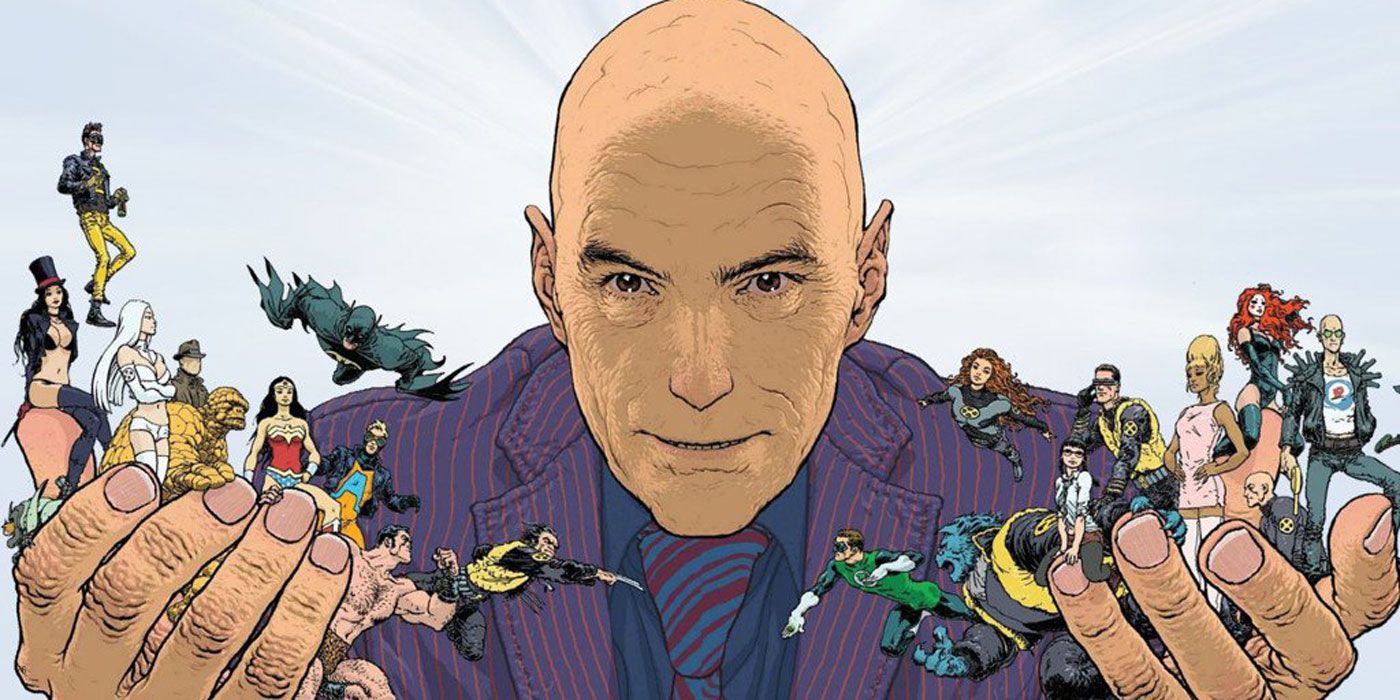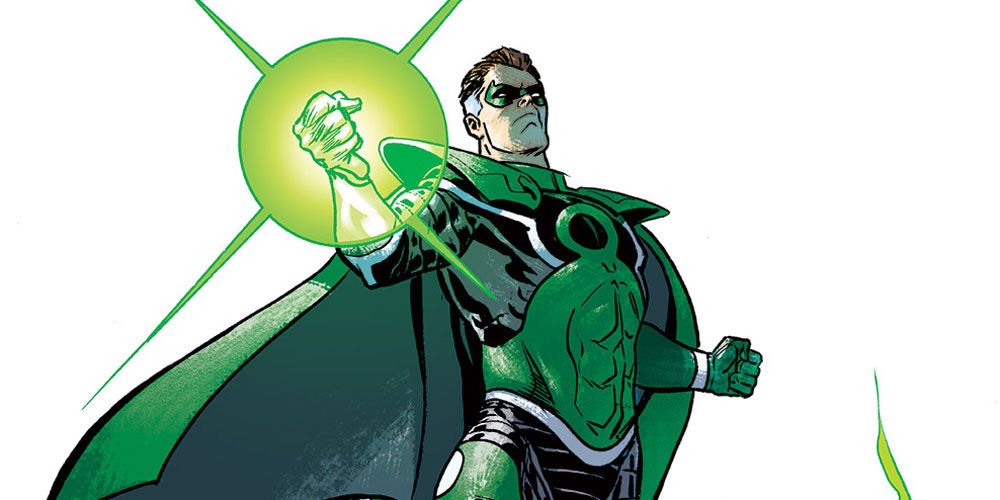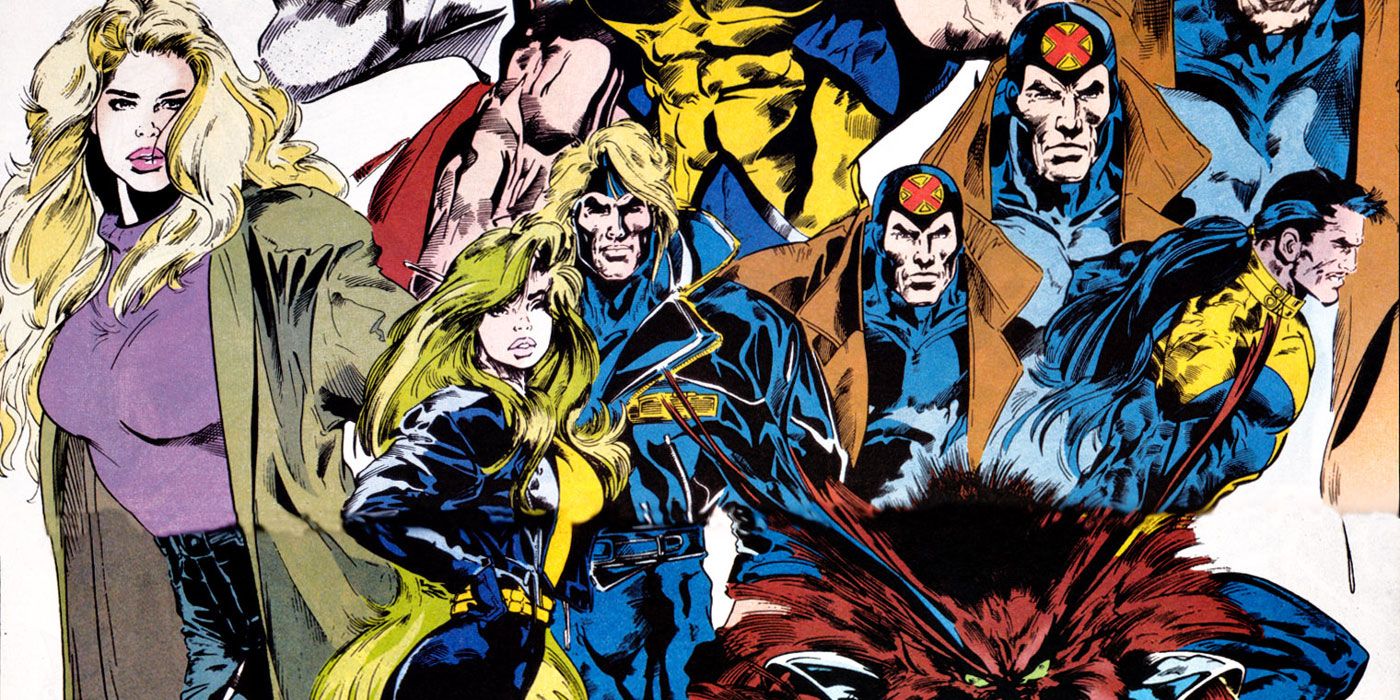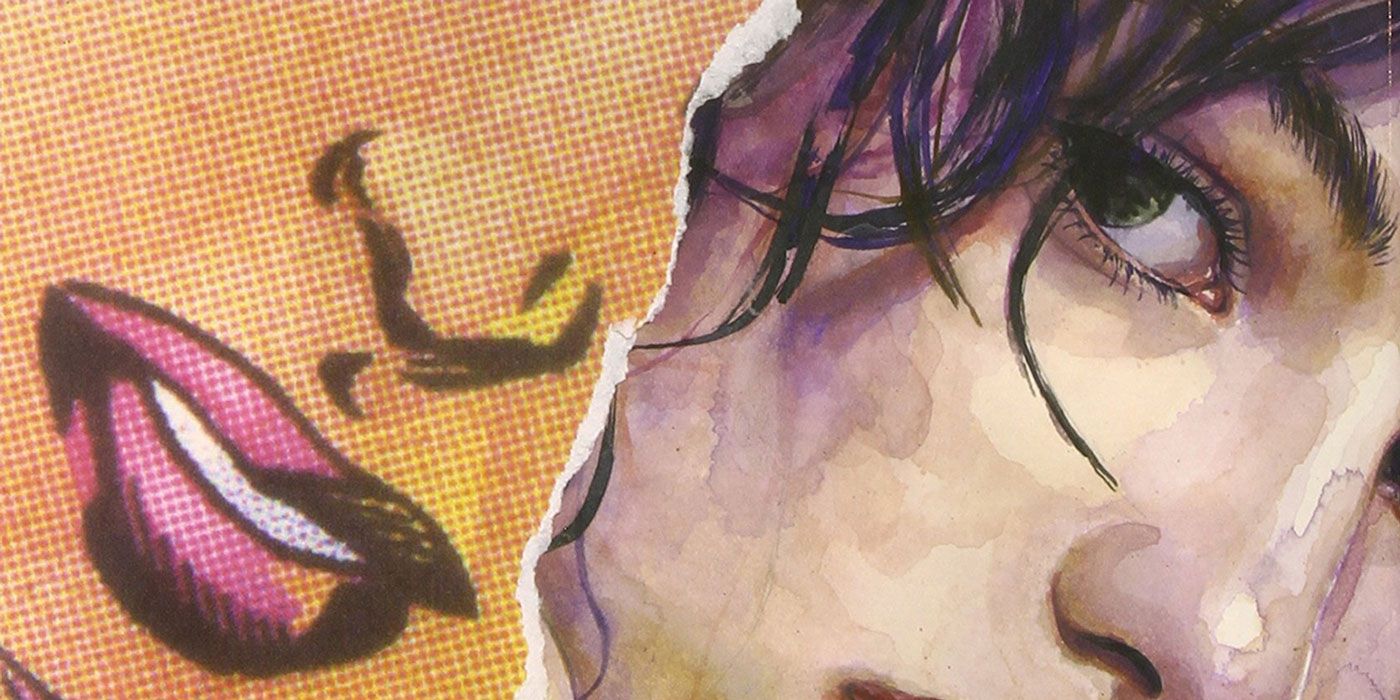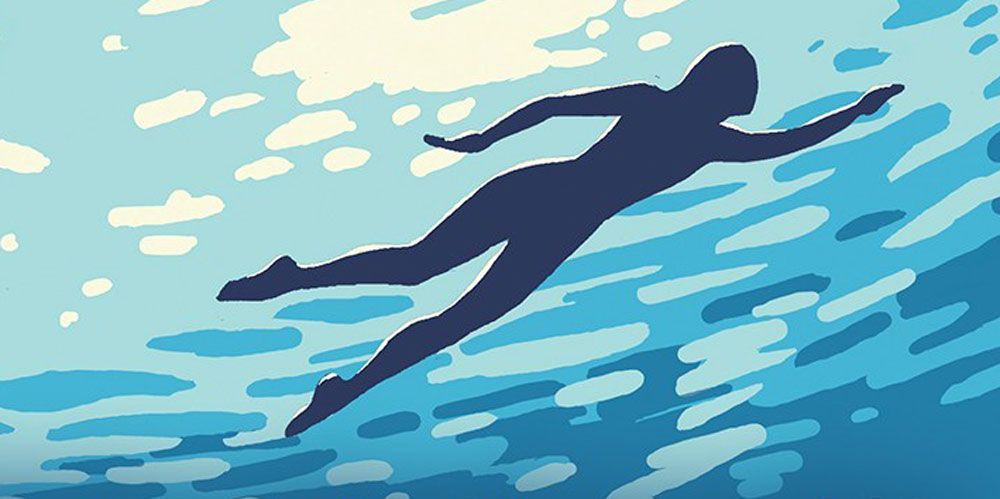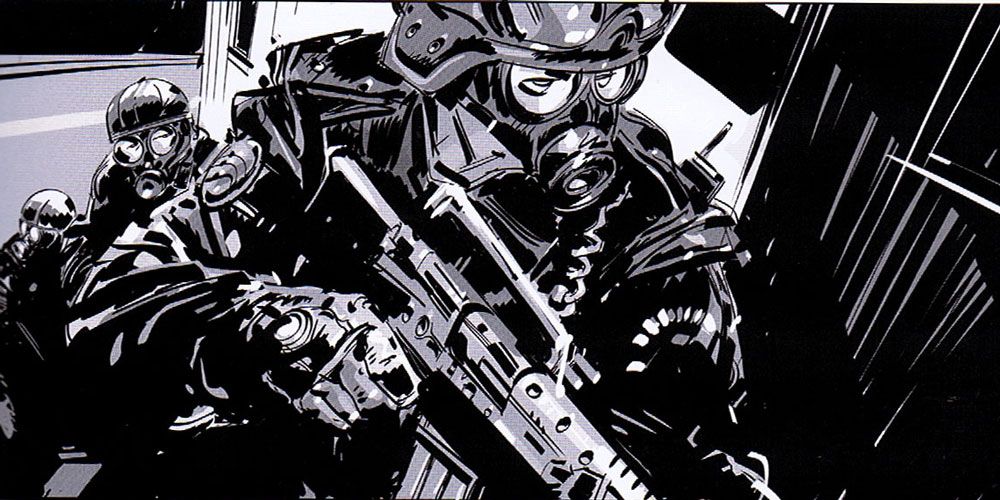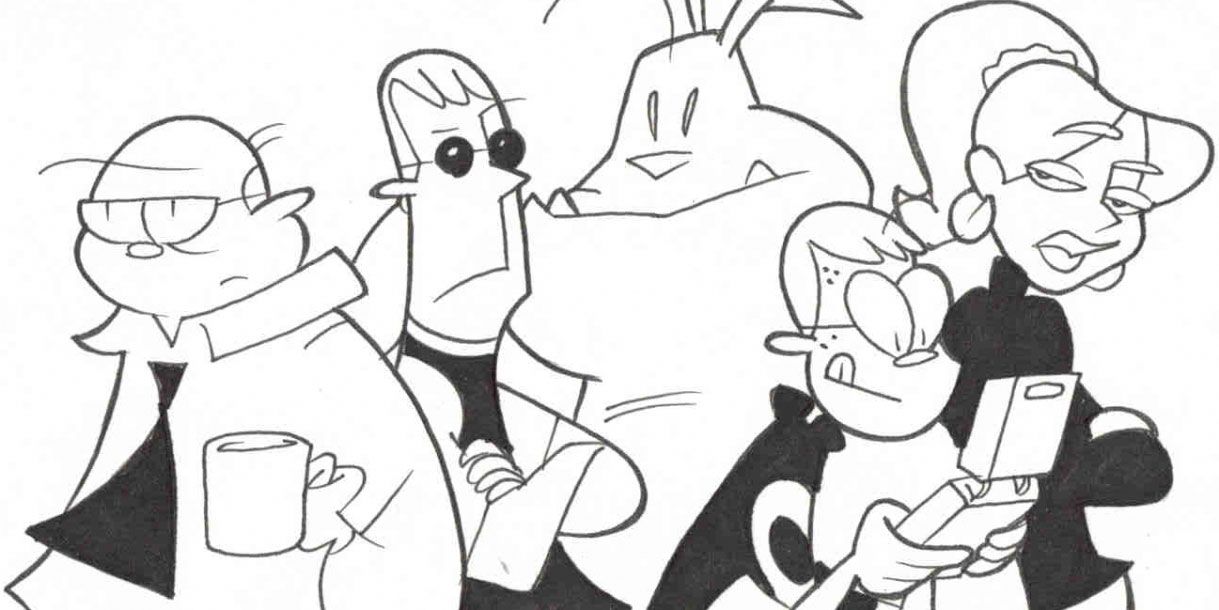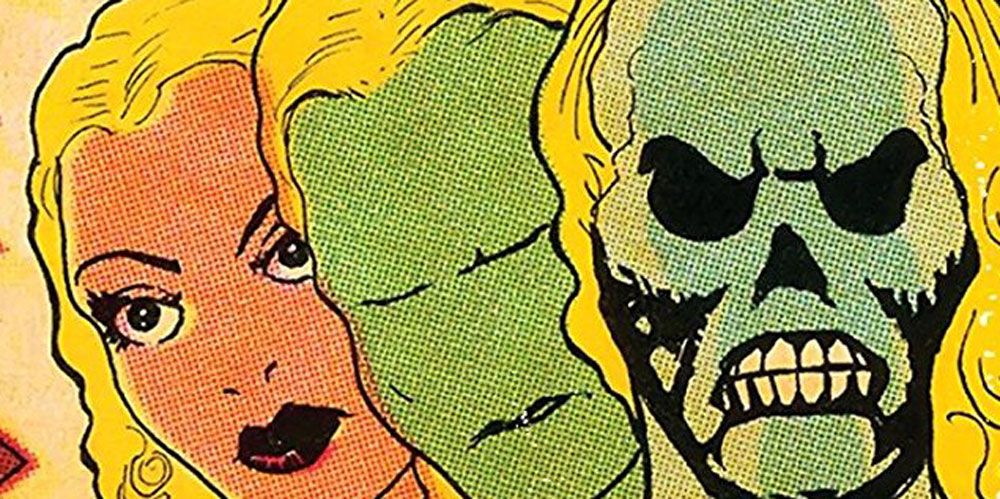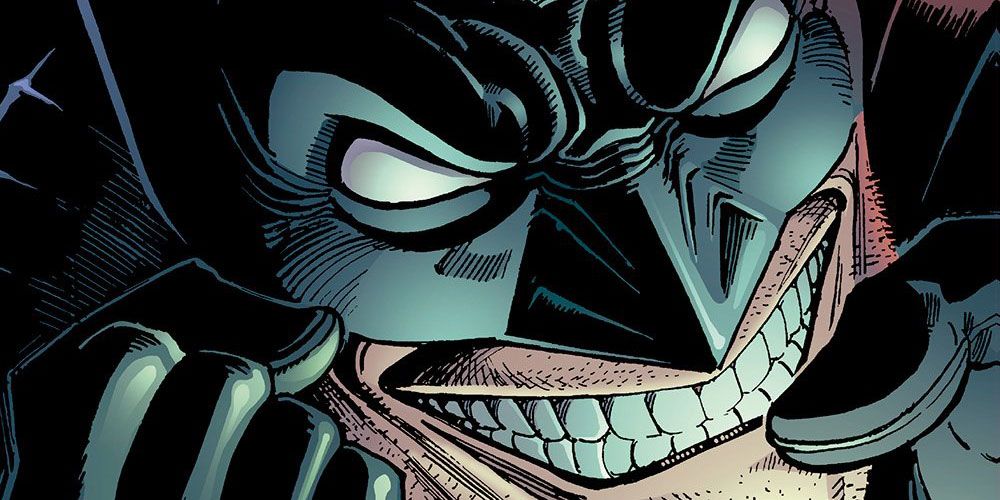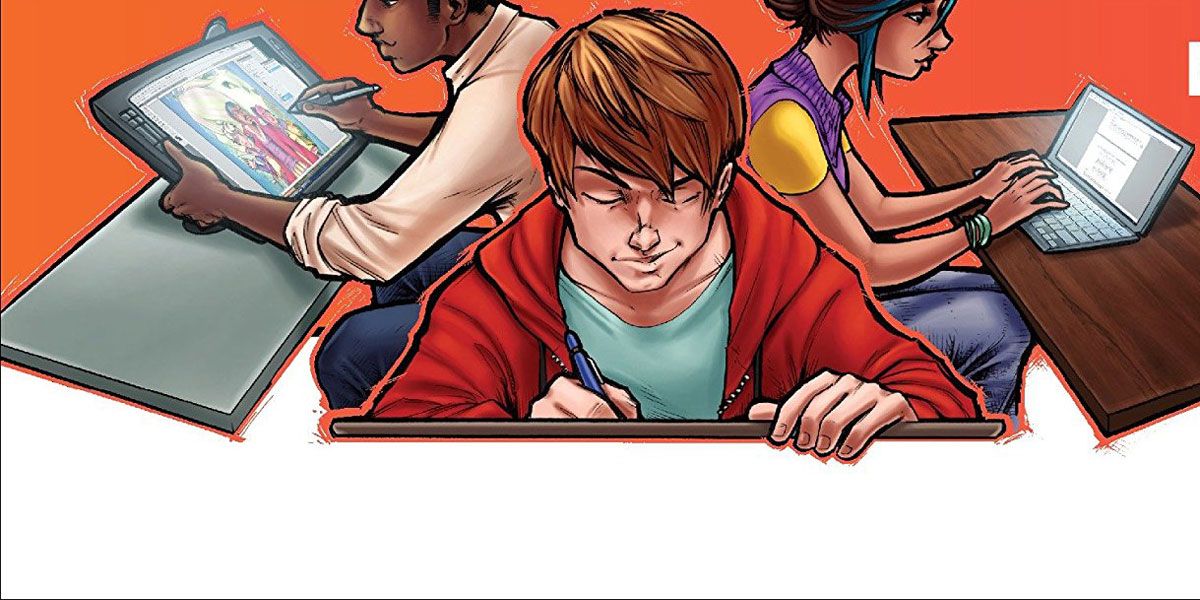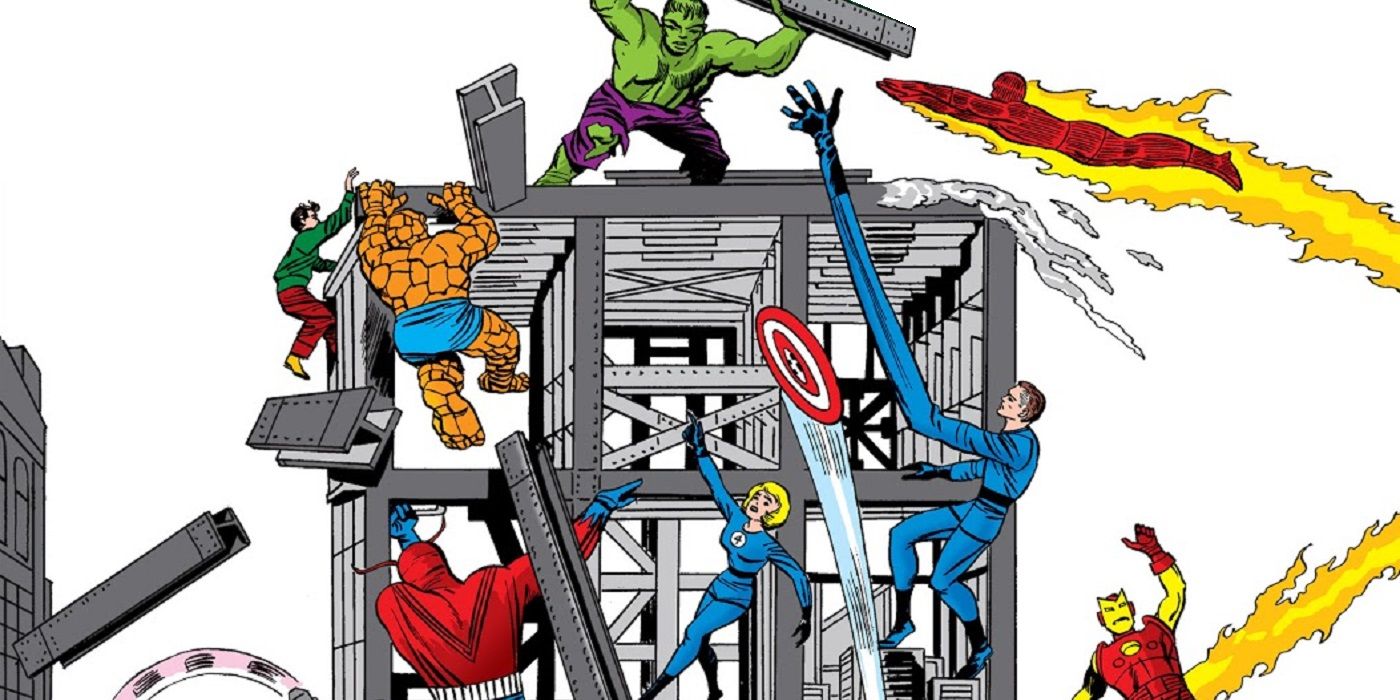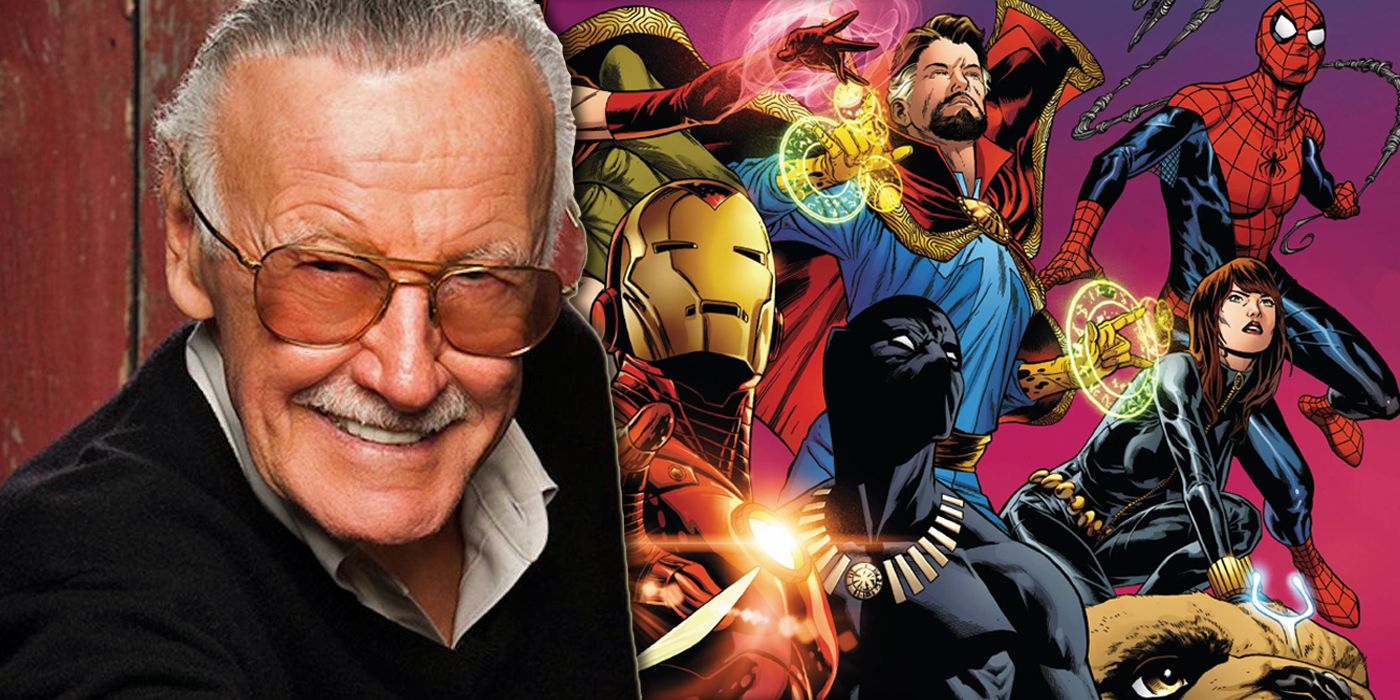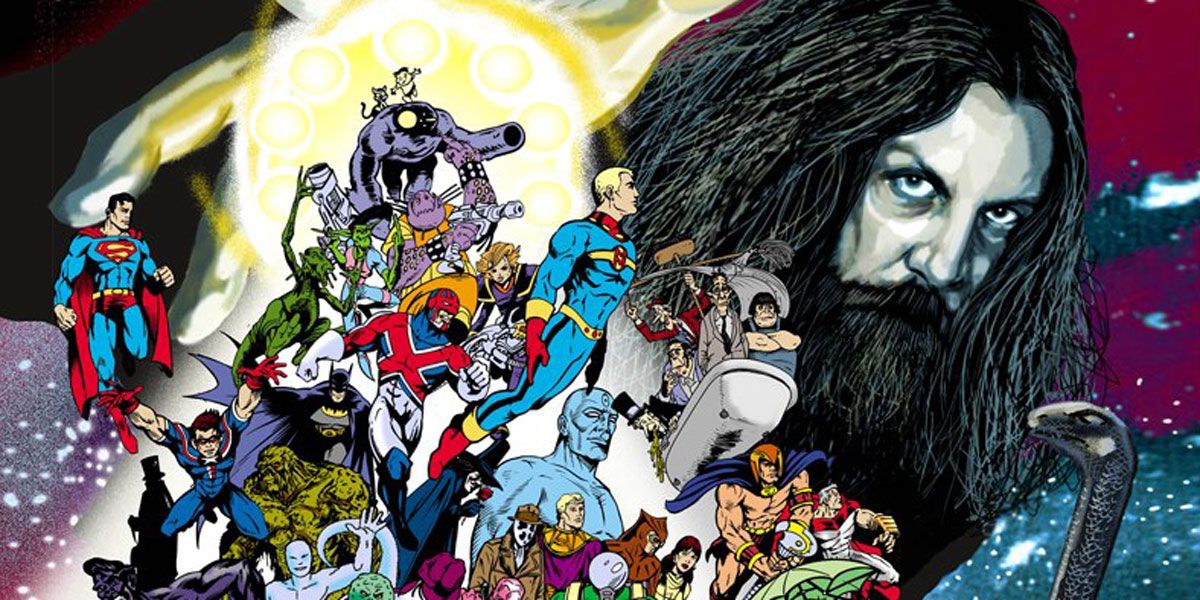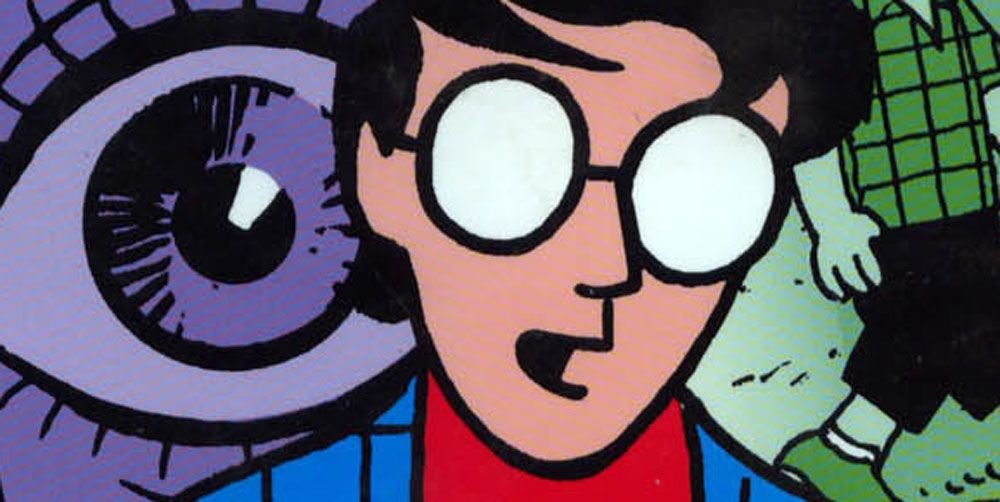Okay, so let's be real. Amid the hundreds of articles about what happened in last night's Arrowverse installment or what comic is coming out next Wednesday, you clicked on this list. Congratulations, you're a creative type, and it's probably driving you mad. You're entering an industry packed to the gills with independent creators and a million unpublished ideas. But it's nothing to fret about. The comic book industry has thrived for decades on the backs of independent, self-published creators. Without them, we wouldn't have world-changing ideas, such as giant mutated turtles who mastered ninjitsu, and without independent creators making their names, we wouldn't have their eventual progression to the big leagues, where the work they did revamping forgotten and underutilized characters have spawned a multimedia franchise in the form the Marvel Cinematic Universe.
Whether you're a writer, an artist, a colorist, a letterer, or anything in between, being a creator can be a daunting task. And it's easy to make a lot of excuses. To that end, we've put together this list to help you. These aren't all the books that can help you become a comic creator, but they're the ones we think have the best chance of getting you on the right track. We've tried to cover everything and even threw in some books to help you learn how to balance all of it. Reading this list is a great way to get started on your path to creating the next classic comic, just promise us you'll start after you read the list. After all, you'll never finish it if you don't start it to begin with.
20 THE COMPLETE IDIOT'S GUIDE TO CREATING A GRAPHIC NOVEL BY NAT GERTLER & STEVE LIEBER
Alright, sure, this one's got a pretty rough name. But if you've ever picked up one of the Complete Idiot's Guides, then you know exactly what you're in for. No frills, nothing over the top, nothing too complicated. If you just discovered comics and your love for the industry, then this is the place to start your journey.
The Complete Idiot's Guide to Creating A Graphic Novel is about taking that first step. If you want to dip your toes into the water, this is the book to start with. The book's writers have a great history in the industry too, with Lieber having written Detective Comics and Hawkman and Gertler being a seasoned comics writer, editor, and publisher.
19 COMICS AND SEQUENTIAL ART BY WILL EISNER
Will Eisner may be the father of the modern graphic novel, thanks to 1978's A Contract with God and Other Tenement Stories, a comics work that's still relevant today. He also made a little character you may have heard of, The Spirit, a rough and tumble pulp detective who is, of course, also beloved today.
In 1985, Eisner published the first edition of Comics and Sequential Art. Based on Eisner's own experience as an instructor at the New York School of Visual Arts, Comics and Sequential Art presents an in-depth look into the art of creating comics, dissecting the practice to its rawest form.
18 WRITING FOR COMICS & GRAPHIC NOVELS BY PETER DAVID
Peter David has quietly written some of the best runs of your favorite comics, tackling lengthy arcs on The Incredible Hulk and Young Justice that defined those characters for generations. He knows a thing or two about writing books, and his 2009 release Writing for Comics and Graphic Novels may be one of the best places to start learning fundamentals as a writer.
In the book, David breaks down the book in a method aimed at beginners who have never written a script before. The end result is an easy read with clearly defined instructions and advice, allowing new comic book creators to dip their toes in without getting in over your head.
17 WORDS FOR PICTURES BY BRIAN MICHAEL BENDIS
Brian Michael Bendis has proven to be a divisive writer for the modern era of comic books, but you can't deny how successful he's been. Taking a team of Marvel's most underutilized C-listers, he revamped the entire street level of Marvel heroes and made The Avengers a surprisingly relatable team.
Bendis may have taken his talents to DC Comics, but his work as a writer is still commendable. Words For Pictures isn't just about his craft as a writer, it's about the business of being a writer, and making the transition from small-press writer to one of the industry's biggest players.
16 GROWING GILLS: HOW TO FIND CREATIVE FOCUS WHEN YOU'RE DROWNING IN YOUR DAILY LIFE BY JESSICA ABEL
Being creative is hard. Whether you're drawing your first comic book panel or writing your millionth comic book script, the fact of the matter is it all takes time. It's all about balancing everything so you can find the time to create, to spend time with your family, and probably still work your day job to pay the bills so you can do all this again.
That's the beauty of Jessica Abel's Growing Gills. It's about finding that balance and still carving out time for the creative projects that have become your lifeblood. The book is full of simple exercises and practical advice, all with one goal: to finish that project that's haunting you so you can move on to the next one.
15 FRAMED INK: DRAWING AND COMPOSITION FOR VISUAL STORYTELLERS BY MARCOS MATEU-MESTRE
Drawing a comic isn't just about putting pictures on a page. Your images have to have that kind of raw, powerful emotion that evokes a sense of feeling in your readers. While you may not know the name Marcos Mateu-Mestre, he is the perfect person to learn this from.
Framed Ink is about capturing a powerful sense of energy in your art style so that your readers can feel the story moving along. For this book, Marcos discusses the ins and outs of narrative storytelling, putting a focus on using a single image to tell a story through visual character development while still maintaining continuity.
14 SUPERGODS BY GRANT MORRISON
Grant Morrison has proven to be a tremendously successful writer, with defining runs in the pages of Animal Man, JLA and of course the seminal modern Superman tale, All-Star Superman. But for a Grant Morrison entry on this list, we're not looking for an instructional book necessary.
It's easy to hammer out a script, but what about making it feel alive? With this in mind, Grant Morrison's 2011 book Supergods: Our World in the Age of the Superhero must be required reading. The book isn't just about the idea of the superhero, but also where it belongs in the human experience, and why such a tried and true concept has continued to flourish for so long.
13 HOW TO MAKE WEBCOMICS BY SCOTT KURTZ, KRIS STRAUB, DAVE KELLETT & BRAD GUIGER
Webcomics don't have quite the popularity they did roughly a decade ago. As portability and Internet speeds increased, the novelty of reading a comic on the web was quickly replaced. However, for creators looking to publish a book on a budget, it's a great way to get the book out and keep costs down.
If you're looking to make a webcomic, How To Make Webcomics is obviously the way to go. The book is written by webcomic royalty. Scott Kurtz, Kris Straub, Dave Kellett, and Brad Guigar are legends of webcomics, with their influence still felt today, and features clear, straightforward advice on creating and publishing your webcomic and building a community.
12 PANEL ONE: COMIC BOOK SCRIPTS
There are dozens of books you can pick up about writing comics, and trying to peg down any specific dozen or so would drive any person insane. The best way to learn for many is through example, so if you're a visual learner you're going to want to give Panel One: Comic Book Scripts By Top Writers a go.
Panel One isn't necessarily about writing a new script, but about examining the ones that work. The book features classic scripts from a who's who of creative types, including scripts from Kurt Busiek's groundbreaking Astro City run and Neil Gaiman's classic Miracleman comics.
11 THE LEAGUE OF REGRETTABLE SUPERHEROES: HALF BAKED HEROES FROM COMIC BOOK HISTORY BY JOHN MORRIS
OK, so you've gone over the collected scripts of comics greatest writers. You've immersed yourself in the classic art of Jack Kirby. You've got a course of comic fundamentals from Brian Michael Bendis! How can you avoid making a terrible comic now? Well, reading up on the ones that didn't do so well is a good place.
It's largely a joke book, but The League of Regrettable Superheroes is definitely worth a read. John Morris has compiled a master list of actual characters, who were actually published to be read by the general public. You owe it to yourself to learn about forgotten characters like Stardust The Super-Wizard or the infamous "New Look" era of the Blackhawks.
10 THE ARTIST'S JOURNEY: THE WAKE OF THE HERO'S JOURNEY AND THE LIFELONG PURSUIT OF MEANING
It's not just all about balancing your work and your life, but about acknowledging it to begin with. Every creator has that moment, where they take a look at a comic book and say to themselves "This is it. This is what I want to do," and it's that first that that kick-starts a drive for life.
Steven Pressfield's The Artist's Journey is all about that. The creative drive can be a burden, and impostor syndrome is a very real problem. The Artist's Journey is about embracing this rather than fearing it, and following through those dreams and passions so you can finally accept your calling as an artist.
9 EISNER/MILLER BY WILL EISNER & FRANK MILLER
Will Eisner and Frank Miller are two guys who clearly influenced each other tremendously. Captured just a few years before he passed in 2005, Eisner participated in this series of discussions with Frank Miller, as captured by Comic Book Legal Defense Fund Executive Director Charles Brownstein.
The book is something of a rare opportunity, a chance to be a fly on the wall as two legends from different eras of comics discuss the industry, their work and where they feel the industry is going. The wheels are always turning in the comic book industry, but the discussion these two legends have about what has shaped it into the many-headed beast it is today is indispensable knowledge.
8 THE DC COMICS GUIDE TO WRITING COMICS BY DENNIS O'NEIL
If you're thinking classic Batman writer, the list is probably as long as your arm. But near the top is going to be Dennis O'Neil. O'Neil had a landmark run at DC Comics, writing Batman tales like "The Joker's Five-Way Revenge!" and redefining Green Arrow and Green Lantern as their sales lagged.
When Dennis O'Neil talks about writing the DC Comics way, you should definitely listen. And that's literally what he does in The DC Comics Guide to Writing Comics. This 2013 release had O'Neil discussing the basic procedure for writing comics, all the way from developing and building the structure up to planning for single issues all the way through massive event level stories.
7 THE COMPLETE GUIDE TO SELF-PUBLISHING COMICS BY COMFORT LOVE AND ADAM WITHERS
It's not unheard of to have your first work be for one of the big two, but let's be realistic. Marvel and DC are a tough nut to crack if you don't have work under your belt, and smaller publishers accepting submissions are flooded. Deadlines, contracts, it can be a nightmare. So, maybe you're thinking about self-publishing.
It's a more viable option than ever. There have been self-published comics since the beginning, but thanks to the advancement of technology and the Internet, it's easier than ever. Comfort Love and Adam Withers have crafted this definitive guide to the ins and outs of self-publishing, with an impressive collection of advice from the likes of David Petersen, Mark Waid, Frank Cho and more.
6 MARVEL COMICS: THE UNTOLD STORY BY SEAN HOWE
Do you want to work at Marvel Comics? Hey, everyone aspires to work for the Big Two, it's obviously the goal. But you should probably have some idea of what exactly you're getting yourself into. Sean Howe has you covered, with his popular book Marvel Comics: The Untold Story.
Step into the background of Marvel's life story as you've never experienced it before. It isn't all soaring highs as creators crank out modern classics in the merry Marvel fashion, though, as Howe also details Marvel's bygone eras. From sweeping corporate mandates to a financial loss that nearly killed the company, you owe it to yourself to learn more about the House of Ideas' history before knocking on the door.
5 THE DC COMICS GUIDE TO DIGITALLY DRAWING COMICS BY FREDDIE E. WILLIAMS II
Freddie E. Williams II isn't just a super nice guy, he's also perhaps the most consistently employed artist in comics. He's always on the shelves somewhere, thanks to his incredible work on titles such as Robin, Final Crisis Aftermath: Run! and two runs of Batman/Teenage Mutant Ninja Turtles.
His handling of The DC Comics Guide To Digitally Drawing Comics is important for one major caveat: digital. Artists who have learned drawing in more traditional formats have sometimes had trouble with that first leap to digital, so having a clear, step-by-step guide from a consistent, industry professional like Williams is an invaluable resource.
4 STAN LEE'S HOW TO WRITE COMICS
Stan "The Man" Lee tragically passed away recently, but he'll always live on every time someone reads one of his books. While the infamous "Marvel Way" of storytelling may have negated any actual scripts Lee wrote, he's perhaps the greatest writing pedigree in the comics industry.
Lee's advice is not to be taken lightly. He didn't just create Spider-Man and the X-Men, he worked his way up Marvel's bullpen for stints as Editor-in-Chief before becoming the man you know from all those cameos. Lee's way of writing comics may no longer be considered the norm, but you'd be a fool to ignore what he's brought to the table.
3 KIRBY: KING OF COMICS
You have to learn what worked if you're going to make your story work. And if you're looking for stories that worked, well, there's a reason Jack Kirby was dubbed The King. Bendis' jump from Marvel to DC was pretty hyped, but it was nothing compared to the notoriety of Kirby leaving the House of Ideas to work on characters like Superman and create The New Gods.
Kirby: King of Comics is a gorgeous hardcover coffee table book, compiled by Kirby's former assistant Mark Evanier. The book isn't just a collection of art, both finished and early drafts, but the story behind how they came to be and a glimpse at Kirby's life in the industry.
2 ALAN MOORE'S WRITING FOR COMICS
I shouldn't have to explain to you why you should take Alan Moore's writing advice to heart. He wrote the most influential comics of this generation's fans, from grounded epics such as Watchmen to the supernatural body horror with his revamped Saga of the Swamp Thing. They just don't get much more legendary than the elusive Alan Moore.
Writing For Comics comes from an interesting place. The book consists of a series of 1985 essays written while Moore was in the thick of his Swamp Thing run for DC, and discusses his approach to script writing and world building. The book also includes a final chapter written in 2003, where the infamously cantankerous Moore discusses what did and didn't work from his own advice.
1 UNDERSTANDING COMICS: THE INVISIBLE ART BY SCOTT MCCLOUD
Comics were beyond huge in the early ‘90s. Not only was business booming at the Big Two (soon to be the Big Three with the rise of Image), the independent scene was thriving in ways never before seen. At its peak, Scott McCloud published the first of a series of books about creating comics.
Look, any Scott McCloud book is a must-read if you're wanting to make comics, but Understanding Comics: The Invisible Art is the easiest place to start. Published at the height of a comic book boom, McCloud's remains the gold standard for gaining a deeper understanding of the art form of comic books and how it can be used to convey ideas.

